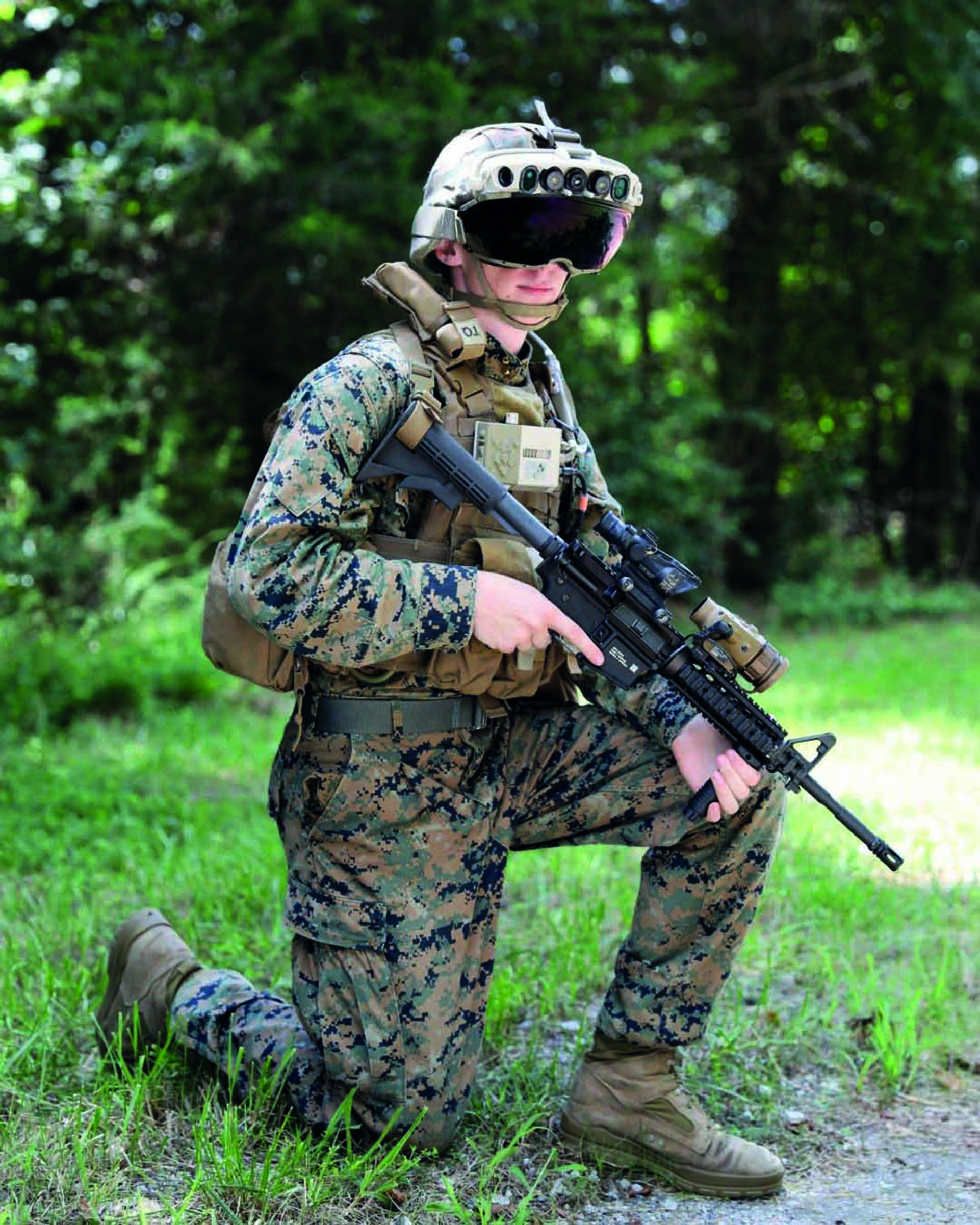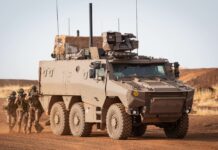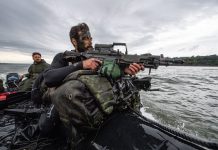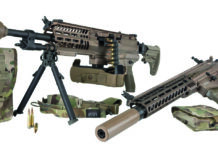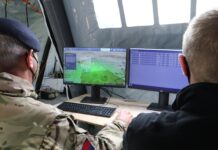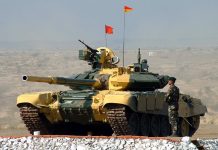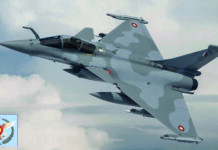There was a time when optical sights were seen as something of a ‘luxury’ item and when night sights were prohibitively expensive and often offered compromised performance. Now for most modern militaries, the idea of not having their assault rifles equipped with an optic as a minimum would be unthinkable. The objective of this article is to a look at some of the recent developments in small arms sights.
Background
Technology has, and continues to advance, offering higher levels of accuracy in both day and night conditions for sights. Higher accuracy equals higher lethality with fewer rounds expended and this is the crux of the matter.
More challenging requirements and the advances in technology that will make those requirements a reality are continuing to drive developments in sights. One area where improvements could be made for night/thermal sights is the provision of batteries offering more power and a sustained operational capability over longer periods. Bearing in mind the large investment being put into advanced battery systems for a whole host of military applications, it would be fair to assume that advances in battery performance are guaranteed over the next few years.
Another critical future development for small arms is already on the horizon. This is the digital fire control system. In essence, this consists of an optic being linked to a fire control computer, with the computer taking into account temperature, humidity, atmospheric pressure, distance and weapon and ammunition ballistics. This translates into the fire control system providing the optimum engagement parameters, which provides a significant increase in accuracy, higher hit probabilities and therefore higher lethality.
Programmes Today and Tomorrow
Arguably the most significant Western small arms programme currently in development is the US Army Next Generation Squad Weapons (NGSW) programme to replace the M4 carbine with the NGSW-Rifle (NGSW-R) and the M249 Squad Automatic Weapon (SAW) with the NGSW-Automatic Rifle (NGSW-AR). Both of these new weapons will share a fire control system known as the NGSW-FC, in January, via the US Army PEO Soldier PM Soldier Lethality. It was announced that the NGSW-FC had been awarded to Vortex Optics. In a contract that could be worth up to US$2.7Bn, the company could supply up to 250,000 XM157 NGSW-FC systems over the next 10 years.
Others are making progress in this new fire control system marketplace. For example, Raytheon ELCAN in Canada have developed the SPECTER Digital Fire Control Sight (DFCS), which has a 1-8x optic linked to a fire control computer. While integrated fire control systems will play a key role in the future, in the present ELCAN can point to significant progress with its optical sighting systems in Europe.
The ELCAN SPECTER
ELCAN emerged as a force in the optic marketplace back in the 1980s when the Canadian Forces replaced their C1/C1A1 (license produced FN FAL) 7.62×51 mm battle rifles with the C7 assault rifle and C8 carbine in 5.56×45 mm manufactured by Dimaco (later Colt Canada). The Canadian Forces required a new optic for the rifle, selecting the ELCAN SPECTER OS, a 3.4x optic and giving it the C79 designation. As the C7 and C8 gained international sales, the C79 was the selected optic, being acquired by Denmark and the Netherlands. Other customers outside the C7/C8 envelope selected the optic for different applications. These included the US Army and Britain.
US Special Operations Command (USSOCOM) asked ELCAN to develop a new sight in 2005 and this led to dual-role sight combining a CQB red dot sight and a rifle combat optic. The resulting system was known as the SPECTER DR. This sight was adopted by USSOCOM, British and Canadian Special Forces, as well as by Australia, Italy and Norway. The SPECTER DR has been continuously developed and has recently won two significant contracts in Europe, with sight deliveries already commencing. The first of these contracts was with Denmark who ordered the SPECTER DR 1-4x optic for their Gevær M/10 (Colt Canada C8 IUR) assault rifles and the M60E6 light machine guns, with the 1.5-6x variant of the SPECTER DR being acquired for the M2HB heavy machine gun.
In November 2021, ELCAN announced that working with Leonardo Germany, they had been awarded the German main combat sight (HKV) contract. Leonardo Germany is the prime contractor for the contract, with ELCAN supplying the SPECTER 1-4x optic, with 107,929 optics contracted for and deliveries commenced in the third quarter of 2021.
Elsewhere in Europe, others are also upgrading their optical sight capabilities. Lithuania awarded Meopta of the Czech Republic a contract valued at nearly €4M covering the supply of four thousand optical sights in March 2021. The first batch of 830 optical sights was received on 24 December 2021, with all sights to be delivered to Lithuania by the end of 2022. The sights will be used with G36 5.56×45 mm rifles of the National Defence Volunteer Force, effectively a territorial defence force.
Meprolight
Israel has a major small arms capability in the shape of Israel Weapon Industries (IWI). It also has a major sight manufacturing capability in the shape of Meprolight. Both companies are part of the SK Group, the largest privately-owned defence company in the country, and the fourth-largest defence company in Israel. As with other Israeli defence companies, Meprolight works closely with Israel Defence Force (IDF), to develop defence technologies and to meet the operational requirements of the IDF with the appropriate systems.
For example, the Meprolight M5 electro-optical red dot sight was developed to meet IDF requirements and is now the standard IDF sight in this category. One advantage that it has is that the sight works with GEN II and GEN III NVGs and magnifiers, without decreasing the field of view of the sight.
A recent development at Meprolight is the TIGON, which they describe as a hybrid thermal and red dot sight. The aim here was to have a cost effective sight that could operate in day and night environments, thereby removing the need to have a separate clip-on thermal sight. If required a magnifier can be fitted behind the sight. Powered by two standard AA batteries, the sight can be powered for thousands of hours in day mode and in the thermal mode there is enough power of five hours of continuous operation. The point of the sight is that it allows increased night combat capabilities across the force at an affordable price. It is understood that the IDF is testing the TIGON and that a number of countries in South America and Europe are interested. Potential users are special forces, regular ground forces and even law enforcement.
In the final analysis, there is widespread acceptance that small arms require effective optical sights to meet their full potential. There are no shortage of choices in this sector to meet most conceivable needs. However, it would appear that the future will eventually belong to digital fire control systems, assuming they avoid being too complex, too heavy and too expensive.


